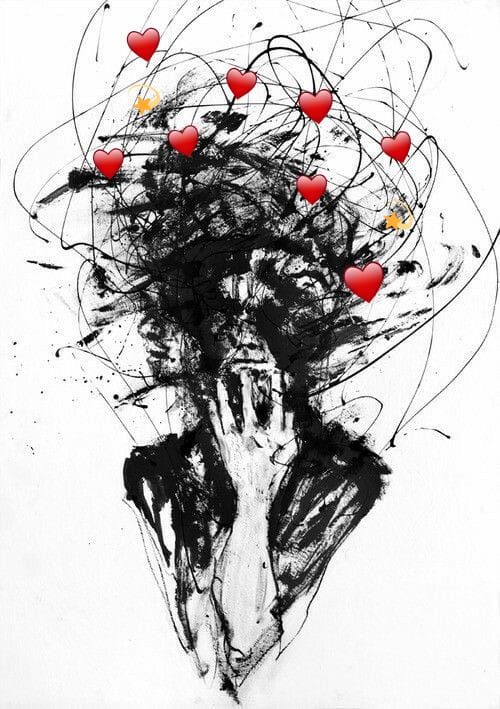The Romanticization Of Suicide And Mental Illness
Jun 21, 2019 • 141 views
Suicide and mental illness are shown as something that can bring great agony to a person but in the fullness of time, it begets beauty.
Novels, since centuries (especially 18th century), depicts suicide and mental illness as a flawed shade of the character which eventually makes the choice of ending their own life, desirable. Superficial deepening of love as a cause of death has influenced media massively, numerous shows and series were driven by the idea of love being limitless and sufficient to end a life or to cause mental illness. Love is popularly subjected to be insane and extensive, which holds the capacity to persuade a person to end his/her life.
Correlation of sensitive issues like mental illness and suicide has been publicized in pop culture by Novels, Movies, series, and plays. This popularity has led to normalization of mental illness, due to which illnesses like depression, anxiety, anorexia nervosa and many more are used as ADJECTIVES.
Often when we read a book or watch a show which has a character who is suffering through mental illness or is having suicidal thoughts, we unconsciously get influenced by them.
Maybe, directly we do not wish to have any mental illness but due to the exceptionally beautiful portrayal of the character, we want to be like them, or as unique as them. But we miss that the media portrayal of suicide and mental illnesses are over exaggerated, incorrect, glorified and lacks the depth of trauma which a sufferer experiences in reality.
Young people get roped into this spiral quasi-cult of suicide idealization and glorification because mental illness is shown as an equivalent of Creative and Artistic mind/personality.
This portrayal of a character being flawed and unique at the same time has created an impact on the audience that mental illness or suicidal thoughts are traits of a person's personality who is deep, artistic and truly romantic. As said by Katlyn Firkus,
" we've begun to believe that the dark past, the suffering, the depression, is a necessary precursor to Brilliance".
The trend of sadness being beautiful has gone so far, that it has become glamorous to think of ending your own life. The idealization of Mental illness and suicide has caused people not to seek help for their symptoms to convenience themselves that there is no other way around. The desire for being supported and unique is now being fulfilled by using mental illnesses even when they are just sad at the moment. Shyness is replaced by anxiety, sadness by depression,on and on.
Which is a totally wrong representation of the illnesses as depression is not a mood, anxiety is not a state of being shy, they are much more than that. They involve trauma and pain, which cannot be conveyed easily, not even by the sufferers themselves.
Usage of suicidal thoughts and illness in conveying the state of love has become a fashion accessory to many people. It's important to understand that Trivializing or carelessly self- diagnosing makes society not to take people with disorders and suicidal thoughts seriously.
Origin of romanticization of mental illness and suicidal thoughts
The novels have given birth to the concept of suicides and mental illness being romantic.
In 1818 Lord Byron published Childe Harold's pilgrimage in which we were introduced to a new kind of hero - BYRONIC HERO.
Byronic Hero can be defined as someone who is typically rebellious, anti-social and darkly romantic.
The idea behind introducing this kind of Hero was to break the stereotypes, as traditionally heroes were meant to be emotionally strong, masculine and filled with all the social values - basically, they were portrayed as perfect human beings.
When a hero who was flawed but full of brilliance and art was introduced, the media blew up.
Various dramas, books, and poems got influenced by the idea of the hero being imperfect yet glorious. This trend was followed up and eventually, it was normalized to use suicidal thoughts and mental illnesses as synonyms of the pain which is experienced in love.
Flavors of romanticizing grew to an extent where being in love and being crazy became the same thing. As the thoughts of suicide and the presence of mental illness were treated as a badge of honor and courage, people desired to be like the character who has this honor, they saw the character as an amazing person.
But they skipped the fact that Mental illness and suffering doesn't make the character amazing, overcoming, being courageous and self-acceptance does.
Am I trying to say that people who suffer from mental illness or suicidal thoughts are not beautiful or worthy? No, absolutely not.
Everyone is beautiful and they are the epitome of courage for fighting against it, but it is unjust to them to show the pain of suffering as something extremely good place to be at. This wrong presentation and mixing up of romance with agony and trauma persuade people to follow the steps of their favorite or likable character.
"They said mental illness and suicidal thoughts are black and white when actually, it's a whole spectrum, it's a rainbow of all the negative feelings".
-Alexandria yoon

The fetishization of mental illness and romanticization of suicide is an incorrect and gold dipped depiction of the actual situation or mindset of the sufferer. The real agony is ignored by making romance and love- the main theme of the story that they are presenting. And this ignorance leads to the glorification of suicide and illness which eventually persuades people to behave as they have this illness or thoughts ( to become as unique and charming as the character.)
A raw and real presentation of the illness and suicidal thoughts needs to be presented to raise awareness and to help those who are actually suffering instead of packing them in a wrap of romance to show that it's all glitter and spark.
